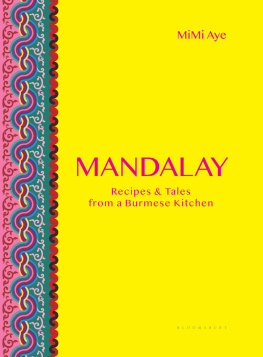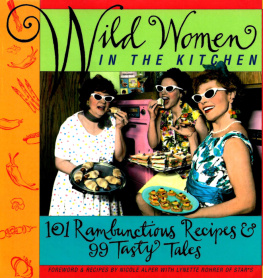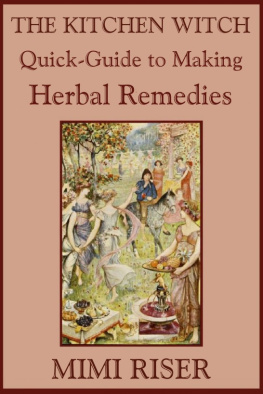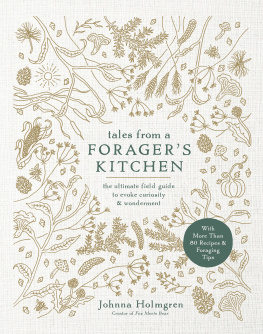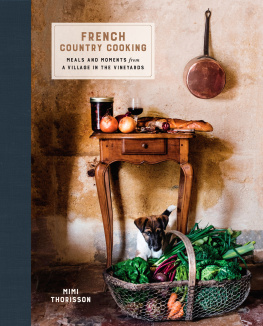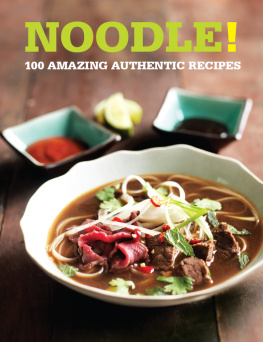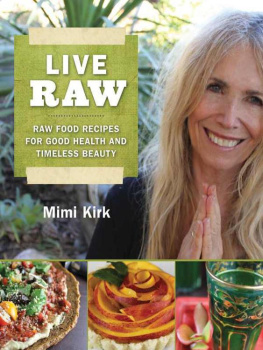MiMi Aye - Mandalay: Recipes & Tales from a Burmese Kitchen
Here you can read online MiMi Aye - Mandalay: Recipes & Tales from a Burmese Kitchen full text of the book (entire story) in english for free. Download pdf and epub, get meaning, cover and reviews about this ebook. year: 2019, publisher: Bloomsbury Publishing, genre: Home and family. Description of the work, (preface) as well as reviews are available. Best literature library LitArk.com created for fans of good reading and offers a wide selection of genres:
Romance novel
Science fiction
Adventure
Detective
Science
History
Home and family
Prose
Art
Politics
Computer
Non-fiction
Religion
Business
Children
Humor
Choose a favorite category and find really read worthwhile books. Enjoy immersion in the world of imagination, feel the emotions of the characters or learn something new for yourself, make an fascinating discovery.
- Book:Mandalay: Recipes & Tales from a Burmese Kitchen
- Author:
- Publisher:Bloomsbury Publishing
- Genre:
- Year:2019
- Rating:5 / 5
- Favourites:Add to favourites
- Your mark:
- 100
- 1
- 2
- 3
- 4
- 5
Mandalay: Recipes & Tales from a Burmese Kitchen: summary, description and annotation
We offer to read an annotation, description, summary or preface (depends on what the author of the book "Mandalay: Recipes & Tales from a Burmese Kitchen" wrote himself). If you haven't found the necessary information about the book — write in the comments, we will try to find it.
MiMi Aye: author's other books
Who wrote Mandalay: Recipes & Tales from a Burmese Kitchen? Find out the surname, the name of the author of the book and a list of all author's works by series.
Mandalay: Recipes & Tales from a Burmese Kitchen — read online for free the complete book (whole text) full work
Below is the text of the book, divided by pages. System saving the place of the last page read, allows you to conveniently read the book "Mandalay: Recipes & Tales from a Burmese Kitchen" online for free, without having to search again every time where you left off. Put a bookmark, and you can go to the page where you finished reading at any time.
Font size:
Interval:
Bookmark:

For Thida and Zeyar
Much as I love you tiny humans all the way to the moon and back, Im looking forward to when its finally your turn to cook for me, and hopefully this book will help.
xxx


Contents

I ntroduction

First things first. Burma or Myanmar? Myanmar or Burma?
Apart from the fact that its always made me wince a little to hear people butcher the pronunciation of the official name (for the avoidance of doubt, its Myun-mar, not MY-an-mar), I have always called my motherland Burma, simply because thats how Ive always known it even in the Burmese language, it was referred to as Bamar-pyi.
I should qualify that to say my spiritual motherland, since, whereas my father and both brothers were all born in Mandalay in Upper Burma, and my mother in Mogok near the Shan State, I myself was born in the slightly more prosaic seaside town of Margate in England. But, ever since I was a little girl, as my parents are Burmese through and through, and most of my family still live there, they have taken us back to visit their homeland year after year. In some ways, I feel like I grew up there, so its natural that I should feel a strong affinity with the place.
Beginnings
My folks, especially my mother, had a deathly fear that I would somehow end up rejecting my Burmeseness so, in order to instil a proper sense of culture, they taught me the beautiful Burmese language with its winsome and bubble-like script, raised us as strict-ish Buddhists and reared us on brilliant Burmese food.
I guess my parents were justifiably anxious that they were fighting a losing battle, as the headmaster of my brothers school in Kent once summoned them in for a meeting where he forbade us from speaking in Burmese at home, whilst I attended a Catholic convent school run by French nuns called Sister Marie-Antoinette and Sister Denise.
(Beyond) Rangoon
My mothers side is mainly based in the former capital city of Yangon, aka Rangoon (although theyre originally from Mogok of which more later). Whenever we landed at Mingaladon Airport, one of her nieces or nephews would pick us up, and wed drive straight to my eldest aunts house near Inya Lake in Yangon, chattering all the way.
When we got there, the table of said family matriarch would be heaving with Mogok meeshay noodles and dim sum, gram fritters and Indian sweetmeats, roast duck and sushi, none of them really going together, but all of them favourites or special requests and brought in or made in our honour as guests from abroad.
The air would be thick with raucous laughter as wed play cards and catch up on juicy gossip and then one of our cousins would suddenly crack a joke that shed recently made a million (pyas, that is, which is about 5). Incidentally, theres even an old Burmese rhyme (with its rough translation) that goes:
Mandalay ma za-gar;
Yangon ma a-kywar;
Mawlamyine ma a-sar.
Mandalay for the eloquence;
Yangon for the braggadocio;
Mawlamyine for the cuisine.
Make of that what you will also note that my father claims that the only remarkable food to come out of Mawlamyine are the massive prawns
So, my mothers family are lively, brash and lots of fun, which is rather like the town itself. This attitude translates to the food in Yangon its modern, slightly flashy, and the first to adopt new trends and to embrace foreign influences. There are hip cafes and bars everywhere, plus a relatively recent influx of chain restaurants, whilst, due to a government crackdown, genuine street food is almost a thing of the past, except in markets or Chinatown.
The first time I saw a Burmese supermarket was in Yangon. Although supermarkets are ten-a-penny back in England, in the Burma of 1998 it seemed truly astonishing. They were so alien that, when a cousin came to stay with us from Burma a few years earlier and we popped to Somerfield for some groceries, she put everything straight in her rucksack because she didnt know that she should use a basket. (At the time I did wonder why a member of staff began following us around.)
I clearly remember when burger joints and spaghetti houses started to open up in Yangon, and thinking how bizarre it was, despite the very Burmese touches such as pickled chillies spiking the silky pasta, or crispy bacon in the burgers comprising more juicy, caramelised fat than lean meat.
The reason for my awe was (and still is) the very peculiar juxtaposition of Westernisation and staunch traditional values. I hesitate to say Buddhist values; whilst 90 per cent of Burma is Theravadin Buddhist, its conservatism is, I believe, a result of Burmeseness (and isolation wrought by the military junta) rather than of Buddhism per se.
For example, both men and women still wear traditional Burmese clothes on a daily basis: patterned sarongs called longyi, subdivided as colourful htamein for the women and rather more mundane paso for the men. Although many men do wear trousers (generally the Shan version known as Shan baun-bi aka Thai fisherman pants), until recently women barely wore skirts at least not ones that revealed more than an ankle and those that did deign to wear trousers were looked at askance or laughed at or assumed to be from abroad. This is becoming much less the case in Yangon these days, but, for the moment Mandalay keeps things old school.
Even in Yangon though, public displays of affection between couples are often frowned upon, although weirdly, its fine for those of the same sex to hold hands or link arms including men as its usually assumed that such friendliness must be platonic

On the way to Mogok near the Shan State by pick-up truck with various family members. Standing in front is one of my mothers brothers his son is on the right next to my brother and me.

My father cannot resist making me pose with some tribes people that we come across.
Historically, alcohol has also been considered a bit of a no-no, and this one is specifically discouraged by Theravadin Buddhist precepts although funnily enough, eating meat is not. And though there has been a recent proliferation of roadside pubs peddling Myanmar beer and rum, and chichi wine bars selling more sophisticated libations, those that frequent them are still often not well thought of. Certainly in the eyes of the older generation, if a Burmese man drinks regularly, he is considered a drunken reprobate, and if a Burmese woman drinks at all, she is deemed beyond the pale.
Smoking, however, is greeted with tolerance, if not approval, for both men and women. Kiplings Burmese maiden and her whackin white cheroot is still a familiar sight, although nowadays you would have to substitute a grizzled grandmother for the fair maiden (even more so for the old national pastime of betel-chewing), as Yangons youth is more likely to prefer Lucky Strike.
Font size:
Interval:
Bookmark:
Similar books «Mandalay: Recipes & Tales from a Burmese Kitchen»
Look at similar books to Mandalay: Recipes & Tales from a Burmese Kitchen. We have selected literature similar in name and meaning in the hope of providing readers with more options to find new, interesting, not yet read works.
Discussion, reviews of the book Mandalay: Recipes & Tales from a Burmese Kitchen and just readers' own opinions. Leave your comments, write what you think about the work, its meaning or the main characters. Specify what exactly you liked and what you didn't like, and why you think so.

